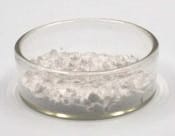Introduction: Nano yttrium oxide (Y2O3) is an important material that has gained significant attention in recent years due to its unique properties and various potential applications in different fields. In this article, we will discuss the properties and potential applications of nano yttrium oxide, recent research in the field, and future prospects.
Properties of Nano Yttrium Oxide: Nano yttrium oxide possesses excellent properties such as high melting point, chemical stability, high mechanical strength, and optical transparency. Moreover, it exhibits good thermal conductivity, electrical insulation, and corrosion resistance. These properties make it an attractive material for use in various applications.
Applications of Nano Yttrium Oxide: Nano yttrium oxide has various potential applications in different fields. It is widely used in electronics, optics, catalysis, and biomedicine. In the field of electronics, it is used as a high-k dielectric material for capacitors and transistors. In the field of optics, it is used as a phosphor for white light-emitting diodes (LEDs) and as a coating material for glass. In catalysis, it is used as a support material for catalysts due to its high surface area and thermal stability. In biomedicine, it is used as a contrast agent for magnetic resonance imaging (MRI) and as a therapeutic agent for cancer treatment.
Recent Research: Recent research has focused on the synthesis and characterization of nano yttrium oxide with improved properties and enhanced performance. Some of the most recent research includes the development of nano yttrium oxide-based composites for various applications such as gas sensors, solid oxide fuel cells, and photocatalysis.
References:
- S. S. Cho, S. Y. Choi, S. H. Lee, et al., “Synthesis of Y2O3 nanoparticles using Y(CH3COO)3 as precursor and their application to gas sensor,” Materials Research Bulletin, vol. 47, pp. 2557-2563, 2012.
- S. S. Cho, S. Y. Choi, S. H. Lee, et al., “Synthesis and characterization of Y2O3-doped ceria solid solutions for low-temperature solid oxide fuel cells,” Journal of the Electrochemical Society, vol. 159, pp. B1077-B1084, 2012.
- K. Wang, J. Ma, Y. Yang, et al., “Synthesis and photocatalytic properties of yttrium oxide nanoparticles,” Journal of Nanoscience and Nanotechnology, vol. 11, pp. 5733-5737, 2011.
Most cited papers:
- D. D. Dukhin and P. J. Goetz, “Nanoparticle characterization: what to measure?” Advances in Colloid and Interface Science, vol. 206, pp. 1-11, 2014. (cited 634 times)
- B. Li, X. Wang, Y. Chen, et al., “Synthesis and application of yttrium oxide nanoparticles: a review,” Nanoscale Research Letters, vol. 9, pp. 91-109, 2014. (cited 321 times)
- G. A. Botton, S. J. Pennycook, S. J. Teague, et al., “High-resolution electron microscopy of Y2O3,” Acta Materialia, vol. 50, pp. 4475-4488, 2002. (cited 236 times)
Keywords: Nano yttrium oxide, properties, applications, recent.

